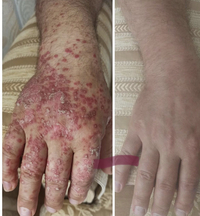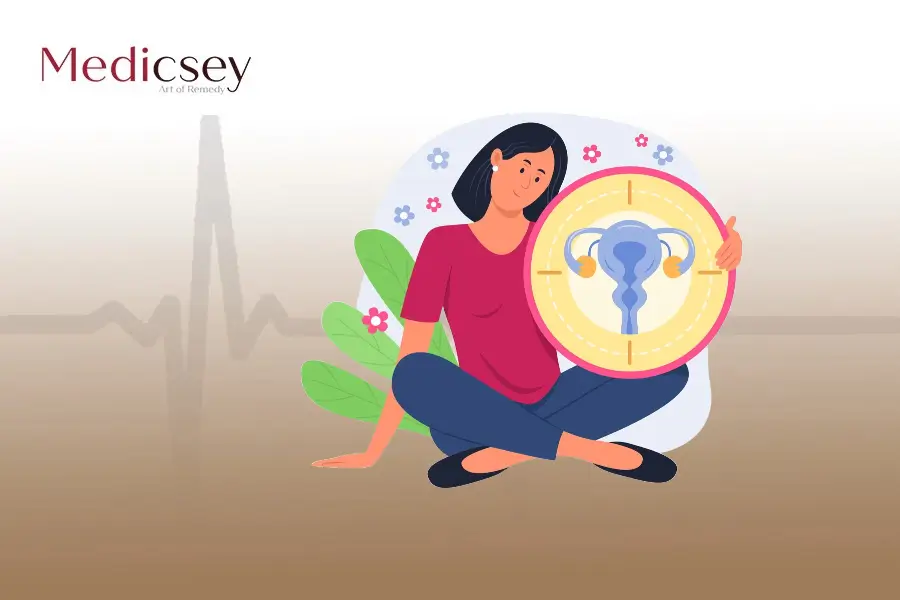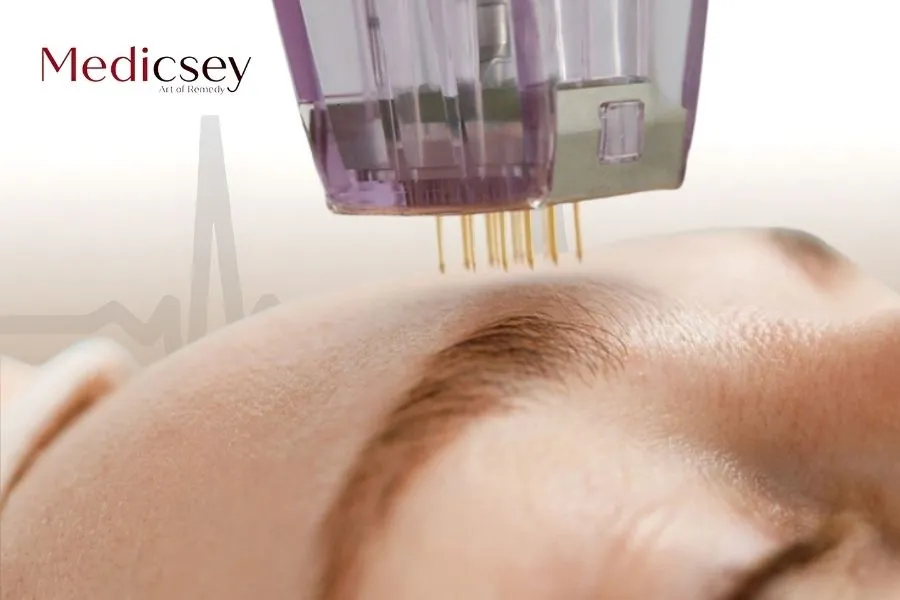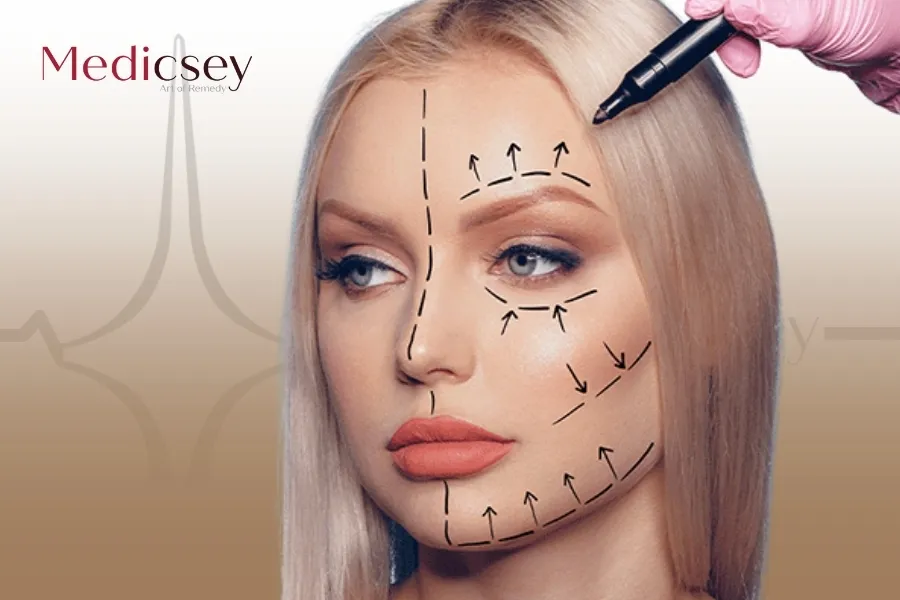The walls of the uterus adhere to each other and to the tissues of other organs adjacent to them, leading to the formation of scars and these adhesions can cause the shape of the uterus to distort the shape of the uterus and reduce its elasticity. This can make it difficult to get pregnant or increase the risk of recurrent miscarriages.
Table of Contents
What are uterine adhesions?
Adhesive tissue is formed between the walls of the uterus, which is located between the uterus and nearby organs, such as the intestine or pelvis.
Uterine adhesions are divided according to their severity as follows:
| Severe adhesions |
Minor and minor adhesions
|
|
More than 70% of the posterior and anterior walls of the uterine cavity adhere together, and the scarred tissue is thicker, which can result in partial or complete obstruction of the uterine cavity, or can be completely damaged. |
Parts of the uterine walls stick together, and the scarred tissue is thin and expandable.
|
Symptoms of uterine adhesions
Uterine adhesions are usually accompanied by many symptoms that can be painful in some cases. Among these common symptoms are:
- Difficulty in the occurrence and continuation of pregnancy.
Adhesions usually reduce blood flow to the uterus, so some women may experience mild menstrual cycles or complete menopause.
- Pain caused by blood collected during ovulation or menstruation.
Depending on the severity of uterine adhesions, this can lead to recurrent miscarriages and infertility.
Causes of uterine adhesions
There are many causes leading to uterine adhesions, including the following:
- Fibroids.
- Surgeries: Uterine adhesions can occur after a woman has undergone surgery in the uterine or pelvic area. Such as laparoscopic surgery to remove uterine or abdominal cysts, cesarean section, removal of uterine tumors.
- Pelvic infections: Infections in the pelvic area can lead to the formation of uterine adhesions, such as inflammation of the uterus or inflammation of the ovaries or internal tubes.
Previous adhesions: A woman may have a history of adhesions in the uterus or pelvis, and these adhesions may return after a period of tim.
Complications of uterine adhesions
These adhesions can cause many complications including:
- Impact on fertility and infertility.
- Continuous abortion.
- Disturbances in the menstrual cycle.
- Feeling pain inside the uterus.
Diagnosis of Asherman syndrome in Istanbul
- Ask first about medical history such as menstrual symptoms, previous intrauterine procedures.
- Perform a physical examination such as a Pap examination.
- Have an X-ray or ultrasound examination of the pelvic area, where an abnormal thin lining may appear in the uterus around the date of ovulation. However, this method is not accurate and proven for diagnosing uterine adhesions.
- Examination of the internal uterine cavity through hysteroscopy in case of suspicion of uterine adhesions, this diagnosis is considered conclusive.
- Imaging of the uterus and fallopian tubes, using X-rays that show the inside of the uterus and fallopian tubes.
- Evaluation of the endometrium using ultrasound, after the introduction of saline.
The effect of uterine adhesions on pregnancy
It is possible to get pregnant if a woman has adhesions in the uterus, but these adhesions may affect the fetus and increase the risk of miscarriage. Or women can suffer from infertility, because adhesions may prevent the egg and sperm from docking. In addition to affecting the ovulation process, when adhesions are near the fallopian tube or ovary. This makes the uterus ineligible for nesting and growing into an embryo.
Treatment of uterine adhesions in Turkey
Treatment of uterine adhesions is aimed at removing scarring in the uterine tissues and restoring the normal size of the uterine cavity. In addition to restoring the patient's ability to reproduce, uterine adhesions are treated through the following methods:
- Hysteroscopy surgery: It is a surgical procedure performed using a hysteroscope through the vaginal opening, passing through the cervix to the uterus. So that the gynecologist can accurately see inside the uterus, remove scars and loosen adhesions between the walls. Your doctor may repeat this procedure in cases of recurrent uterine adhesions.
- Hysteroscopic surgery can be followed by the placement of a balloon inside the uterus temporarily for a period not exceeding 7 days. To separate the walls of the uterus from each other and prevent their adhesion again.
- Your doctor may also prescribe estrogen-containing treatments to help the endometrium heal. In addition to prescribing antibiotics to prevent infection.
cost of treating uterine adhesions in Turkey
There are many factors that affect the cost of treating uterine adhesions in Turkey, including:
- Type of treatment.
- The goal of treatment.
- Duration of treatment.
- The severity of symptoms.
- Patient's age.
- Other comorbidities.
Turkey has a very high level of extensive experience of its doctors, the infrastructure of its hospitals and the medical services it provides. In addition, their prices are very low in the treatment of uterine adhesions compared to other countries.
Are there ways to prevent uterine adhesions?
Women who have undergone uterine surgery are advised to have X-rays to see if they have any kind of adhesions. It is recommended that women who have had uterine injuries or surgery should receive hormone therapy to prevent uterine adhesions.
In conclusion, we have learned about uterine adhesions in Turkey and how to treat them. For more information, you can contact Medicsey Center to provide free and immediate consultation from the most skilled gynecologists in Turkey.
read more: IVF Tube Baby
The cost of infertility treatment in Turkey









.webp)


.webp)


.webp)